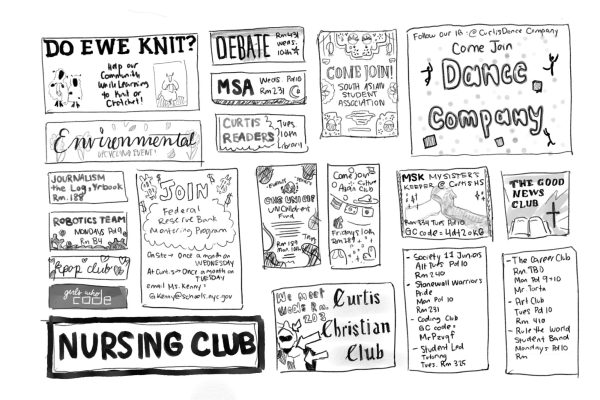High school is tough for trans youth
A trans student at Curtis writes about their experience transitioning while still in high school.
The term transgender (or trans) is used to define individuals who identify with a gender that doesn’t correspond with their gender assigned at birth. This concept has been existent for centuries, but mass attention regarding the subject has only recently gained traction. Transgender people originate from varied walks of life. We are students, teachers, parents, siblings, and peers.
A survey done by the Williams Instuitute in 2016 showed that 0.6% of American adults identify as transgender while surveys done among younger recipients revealed even larger percentages. The Human Rights Campaign reported that among LGBT youth, 10% identify with the term transgender, as well as other variations such as genderqueer or androgynous. This illustrates that larger portions of the youth associate with gender non-conforming identities, making it even more important to educate society on the transgender experience.
Although there are not many characteristics that discern transgender individuals from those who are cisgender (a person whos gender identity corresponds to their birth sex), the stigma associated with being part of the transgender community can pose difficult challenges. One environment in which this stigma becomes extremely apparent is school. Young transgender indivuduals often begin going through the process of transitioning while in high school. In fact, a study done by the CDC revealed that 2% of high school students identify on the transgender spectrum.
This poses a unique position that can be difficult to navigate. The process of transitioning can be extremely burdensome, especially if you are under 18 and cannot access hormone replacement therapy or other treatments that assist in the process of transitioning. The emotional stress from being perceived as the gender you don’t identify with, despite doing everything in your power to present as so, can be devastating and leave a person feeling insecure or inadequate. Even something as small as the inability to change your birth name on the attendance can be upsetting.
As a transgender student, I myself have experienced numerous predicaments in school while I was transitioning. Although teachers are compliant in using the correct name and pronouns, they often make mistakes. Though these mistakes may seem small and are overlooked a majority of the time, they still have a negative affect. In some cases, this mistake could be vocalized to an entire class, creating a great sense of embarrassment for the trans student.
Teachers and students alike need to be more aware of the pronouns they use for the sake of respecting transgender and gender non-conforming individuals alike. It is as simple as quietly asking a fellow student what their pronouns are or if you are already aware, reminding yourself that it is important that you use them.
By requiring students to change for class, physical education poses another predicament. The only available space to change is the locker room which provides no privacy. Transgender students need a private space to change where they can be comfortable. For someone who doesn’t identify with their gender assigned at birth, gym classes that are determined by sex put transgender individuals at risk, especially those who may not have come out yet.
In my personal experience at Curtis, while I was going through the early stages of coming out, I was assigned a girls gym class. At the time, I was still uncomfortable with my identity and unsure how to deal with my discomfort in the locker room. I was told that by not changing for class, I would fail, so I had few alternate options. This difficulty adds unnecessary burden and anxiety on teenagers struggling with their gender identity.
The lack of accessible gender-neutral bathrooms is another issue for trans students at Curtis. This topic was brought to the attention of administrators by LGBT students three years ago, but students still have limited access to any gender-neutral bathrooms. It was speculated that these bathrooms would be available in the newly-built new wing but instead all of the single stall bathrooms are designated for teachers and off-limits to students. This means that every student who feels uncomfortable using the public gender-assigned restrooms are left with no choice unless they walk to the other wing to use the private health-center bathroom, the only one in the school available for student use. This process makes going to the bathroom more time-consuming, but is sometimes the only comfortable option for transgender students.
There needs to be a stronger focus on accomodating transgender students in high school to make the process easier for us. No student should have to live with additional discomfort through their transitioning process that can be easily amended with small changes.




